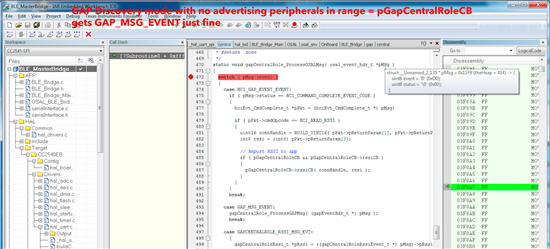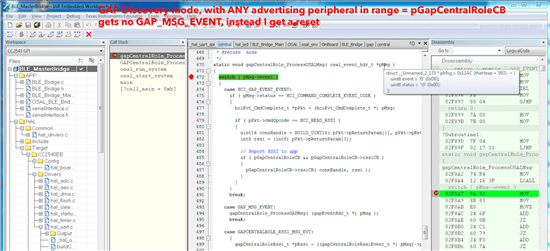Hi, I've been working for a couple weeks now to try and adapt the SerialBLEBridge example from the wiki to work in Central mode instead of Peripheral mode. So, really, what I tried to do was merge the SerialBLEBridge, which I can independently get to work in peripheral mode, with the SimpleBLECentral example project that I can also get to work independently, and I seem to have integrated the serial bridge part in correctly since I can send commands and respond with data correctly, but when I try and call GAPCentralRole_StartDiscovery I get a stack overflow.
I've been stuck on this for a while now and have not been able to find a way to solve this. The exact error is:
The stack 'IdataStack' is filled to 100% (192 bytes used out of 192). The warning threshold is set to 90.%
The stack 'XdataStack' is filled to 100% (640 bytes used out of 640). The warning threshold is set to 90.%
The stack pointer for stack 'XdataStack' (currently XData:0xFFFF) is outside the stack range (XData:0x0001 to XData:0x0281)
I feel like I've made a little progress by reducing the size of all of my constant variables, and reducing the sizes of the serialbridge buffers, but nothing I do seems to get me past this. I've never been able to successfully do a discovery..
Difficult to answer this one, I know, but hoping someone has an idea.
I'm using BLE stack 1.4
Thanks



